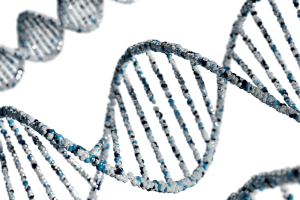New research supported by Phenomics Australia unravels the molecular mechanisms underlying a group of rare diseases characterised by abnormal ribosome protein production. This work has been published in Cell Reports by researchers at the Australian National University and Peter MacCallum Cancer Centre.
Phenomics Australia Functional Genomics and High-Throughput Screening services nodes at the ANU Centre for Therapeutic Discovery (ACTD), and at the Victorian Centre for Functional Genomics (VCFG), have collaborated to unravel the molecular pathogenesis of a rare class of syndromes called ribosomopathies, which impact on ribosome function and protein synthesis. These include Diamond Blackfan Anaemia, an inherited blood disorder that affects the ability of the bone marrow to produce red blood cells.
Dr Amee George, head of the ANU Centre for Therapeutic Discovery, a Phenomics Australia node at the John Curtin School of Medical Research at the Australian National University, and lead of the research said
“This paper describes our work to unravel the molecular mechanism underlying the nucleolar surveillance pathway, which is a stress response pathway activated when ribosome biogenesis is perturbed. Using high-throughput genome-wide functional RNAi screening conducted in both the ACTD and VCFG, we identified the critical genes involved in the regulation of p53, a tumour suppressor protein which is stabilised when the nucleolar surveillance response is activated. This process underlies the molecular pathogenesis of a rare class of syndromes called ribosomopathies which impact on ribosome biogenesis and ribosome function, including Diamond Blackfan Anaemia.”
“Through genome-wide RNAi screening, we unbiasedly identified that genes which are associated with the ribosome, when disrupted, most potently stabilise p53. Furthermore, we present data to support the notion that a functional nucleolar surveillance pathway is essential for all nuclear-acting stresses to stabilise p53, thus ensuring that ribosome biogenesis is hardwired to cellular proliferative capacity through p53 activity”.
“Our data provides important information that will help us in the future to identify biomarkers and therapies for Diamond Blackfan Anaemia and other ribosomopathies, as well as develop new cancer therapies which selectively activate the nucleolar surveillance pathway.”

Additional information
Nuclear stabilization of p53 requires a functional nucleolar surveillance pathway.
This manuscript is dedicated to the memory of A/Prof Kate Hannan, Head of the Cancer Therapeutics Laboratory in the Division of Genome Sciences and Cancer in the John Curtin School of Medical Research, whose contribution was key to the publication of this work.







